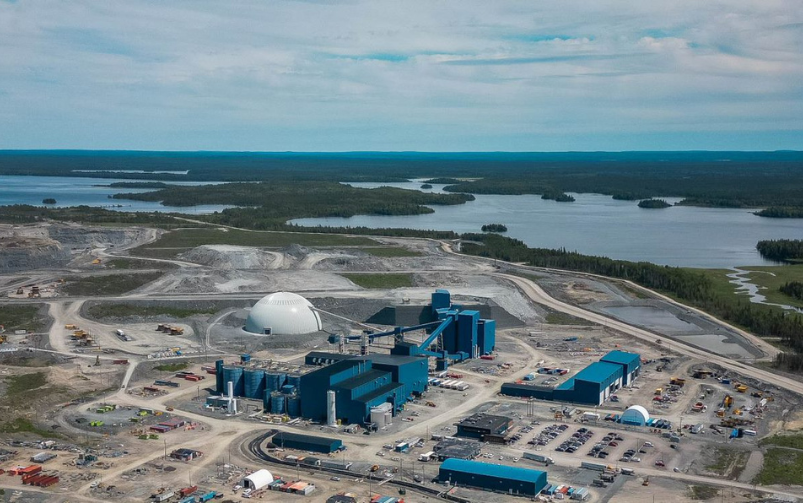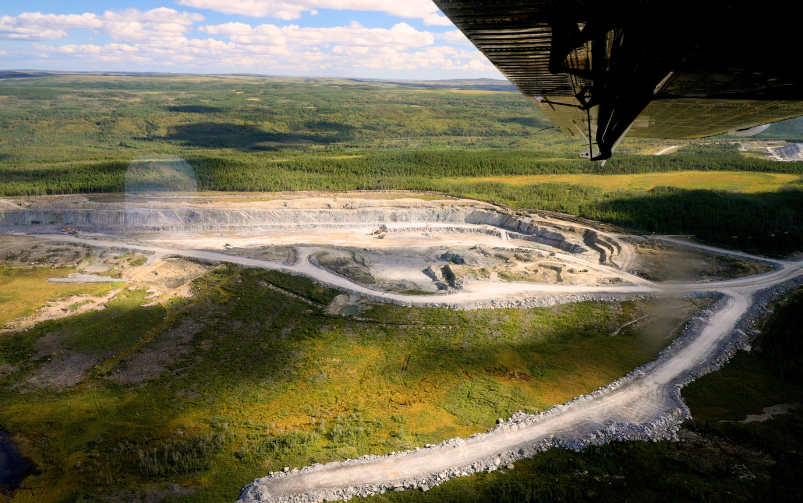Yukon’s Sulphur Creek, an area where prospectors found significant gold deposits during the Klondike Gold Rush, is one of the sites where gold is being recovered for a new jewellery line. Courtesy of Yukon Gold.
Welcome back to your weekly mining news recap, where we catch you up on some of the news you may have missed. This week’s headlines include the launch of public consultation on tariffs on Chinese-made electric vehicles, Teck, B.C. First Nation and provincial government partner to clean up legacy mine site and Skeena Resources gets funding for its Eskay Creek project.
Australia’s Paladin Energy has made an offer to acquire Fission Uranium for $1.14 billion in an all-stock deal, which would grant Paladin control of a sizeable uranium project located in Saskatchewan’s Athabasca Basin region, as reported by Bloomberg. Once constructed, the advanced stage PLS project could potentially become one of the world’s lowest-cost uranium mines, according to its 2023 feasibility study. Construction and commercial production are planned for 2029.
Operations at Victoria Gold Corp.’s Eagle gold mine, located in Yukon, have been halted after a portion of the heap leach pad failed and slid outside of its containment area on Monday, as reported by The Globe and Mail. According to a Wednesday update from Yukon’s mines minister, runoff from the leach pad has since been contained and noted the slide caused some damage to mine infrastructure.
Toronto-based luxury jeweller Mejuri launched a new gold line this week, which is being marketed as the first jewellery collection using metal recovered from old placer mine sites. Mejuri partnered with Regeneration, a company specializing in extracting metals from mine waste, and with the Swiss metal refiner MKS PAMP to create the products. Regeneration’s gold recovery process includes rehabilitation of legacy placer sites in Yukon and Alaska.
A 30-day public consultation period regarding potential federal trade measures against Chinese-made electric vehicles (EVs) will begin on July 2, as reported by Bloomberg. Some are concerned that China may retaliate against new tariffs or other policy changes as the country is one of Canada’s top trade partners.
The B.C. government, the Taku River Tlingit First Nation and Teck Resources will work together to develop a mine closure and remediation plan for the historic Tulsequah Chief mine, which has been polluting the Tulsequah River for several decades, as reported by Business in Vancouver. The mine, which last operated in the 1950s, is located roughly 100 kilometres southwest of Atlin, B.C., and the site does not have a tailings pond, which has resulted in increased levels of acid rock drainage and metals flowing into the river.
Skeena Resources has received financing of over $1 billion from Orion Resource Partners to be used for the development and construction of the Eskay Creek gold and silver project, located in northwest B.C., as reported by Engineering News. Skeena Resources is working on wrapping up its 2024 early works programs and detailed engineering plans, with commercial production slated to begin sometime during the first half of 2027.
E3 Lithium’s Clearwater lithium brine project in Alberta will cost an estimated $3.4 billion, according to a new pre-feasibility study, as reported by The Northern Miner. The study outlined an operation that would produce 32,250 tonnes of lithium hydroxide monohydrate (LHM) annually, and has an after-tax net present value of $5 billion.
Ten Canadian mining technology companies received a combined $2.4 million in grants from the Mining Innovation Commercialization Accelerator (MICA), a federally funded program that aims to bridge gaps between innovation and commercialization in the industry, as reported by Northern Ontario Business. The recipients include Tersa Earth Innovations to progress its TersaClean technology for microbial fuel cell-based tailings treatment, MineSense to trial its ShovelSense technology, which differentiates ore and waste in real-time during underground operations, and pH7 Technologies Inc. to implement a sustainable heap-leaching process for extracting copper from low-grade ore.
Blasting and the resulting fragmentation are key to how well a mine operates, how productive it is and how profitable it can be. Recent digital solutions, including BME’s Xpolog and Orica’s BlastIQ systems, are tackling the performance, sustainability and safety challenges of this essential stage in mine operations, as reported by Mehanaz Yakub for the May issue of CIM Magazine.
That’s all for this week. If you’ve got feedback, you can always reach us at editor@cim.org. If you’ve got something to add, why not join the conversation on our Facebook, Twitter, LinkedIn or Instagram pages.




